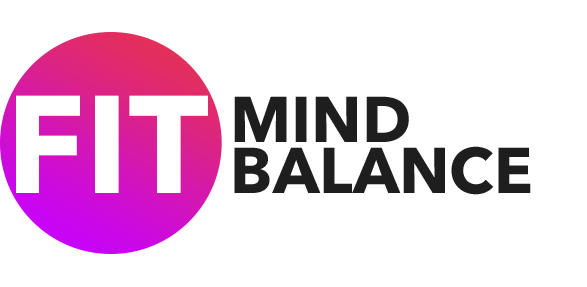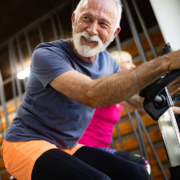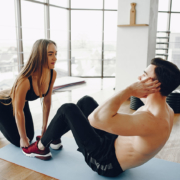1. Use your body weight. You need nothing else besides your own body weight to get great results. The push up, for example, a very simple exercise performed with your own body weight will help you sculpt sexy summer shoulders and a nice firm midsection.
2. Pick up the pace! No matter where you are, you can squeeze in some extra cardio. Walk at a faster pace while breathing deeper to increase your heart rate. Bam! A mini cardio exercise.
3. Use your breath. To get the most out of your breath, breathe from the diaphragm. To do this, think of breathing in a 3D fashion; your ribcage should expand from front to back, top to bottom, and left to right. These deep breaths will help you burn extra calories and give you extra energy during your workouts. The bonus is that you can use this breathing style not only to burn more calories during exercise but also while walking to the corner store, working at your desk, or just sitting in the car on your next road trip!
4. Carry a reusable water bottle. No matter where you go or what you do, bring water with you. Our bodies can misread being hydrated for being hungry, leading to over consumption and weight gain. Also, when traveling on planes or to higher altitudes in general, the amount of oxygen in the air decreases equating to dryer air and reduced body hydration. This can leave you with unhealthy food cravings, headaches and poor body awareness from fatigue. To be more alert and make more right food choices, drink more water! Carry a reusable water bottle wherever you go. You can empty out the water before a security check point and fill it up right after. You’ll save money on bottled water, not to mention help reduce waste!
5. Be food prepared! No matter where we are, we’re often tempted to “grab and go,” especially when traveling. Unfortunately, most ready to go snacks are calorie packed and nutrient deprived. Save yourself the extra calories and pack some yummy granola bars, fruits and/or nuts in your carry-on bag so you’re prepared to fight the urge of the grab and go pastry.
6. No time? No problem! More intensity! Even 20 minutes will get you into the zone of fat blasting and muscle building as long as you maximize your effort. The goal of a short workout should be to workout at your personal intensity max. When you feel like it’s time to stop, try pushing for 10 more reps to maximize the hormonal response from your workout. Do this for at least 20 minutes targeting your upper, middle and lower body with push ups, planks, crunches and burpees, and you’ve got a complete workout!
7. Keep a food log. Recording what you eat is one of the best ways to stay on track. Make it easy for yourself and download an app (my favorite is Lose It!) to keep track of your daily intake no matter where you are. Your goal should be smaller meals, more often.
8. Bring a workout video. No matter where you are, you can pop in a video to stay on track – it’s like bringing a personal trainer wherever you go! My favorite is Exhale’s 30 Day Sculpt. It’s perfectly designed with 30 days of quick and efficient 20 minute fun, fat-blasting workouts!
9. Buddy up! Accountability is everything. Having a partner keeps you accountable and makes diet and fitness goals more fun! Not only have you set yourself up for success with buddy system accountability, but you now have someone to share your excitement with when you hit your goals!
10. Shop the farmers market for fresh produce. If your food can survive nuclear fallout, you shouldn’t be putting it in your body. The less time your food can survive on the supermarket shelf, the better it is for you. Fresh fruits and vegetables don’t last as long as a box of Wheat Thins and that’s a good thing! Vitamins and minerals that are found in darker fruits and vegetables are what you need to keep your body healthy. Pick up fresh produce wherever possible.
11. Find stairs! Climbing stairs is an incredibly effective cardio and lower-body sculpting workout, and you can normally find staircases somewhere in the vicinity of a park or beach.
12. Use water bottles as dumbbells. You get the dual benefits of resistance training and hydration, both critical during the summer. Water bottles can be used for a number of toning exercises such as tricep kickbacks, arm circles and overhead presses, and can also add resistance to lunges and squats.
13. Burpees. The most comprehensive exercise that can be done anywhere, anytime! Three sets of burpees will give you a cardio workout while also targeting upper body, lower body and core strength. It’s the all-in-one exercise!
14. Find a bench. Benches can be found in numerous outdoor areas and serve as a great fitness tool. For a quick full body routine, try the following: Start standing on top of the bench and lunge behind you bending the back knee as low to the ground as possible. Make sure your front knee remains directly above the heel to protect your knee. Alternate reverse lunges completing 8 on each leg, 16 total. Step down from the bench and turn around and sit on the bench with your legs extended straight in front of you, feet on the ground. Pressing your palms into the bench with fingertips forward, lift your rear end off and slightly in front of the bench, and bend your elbows directly behind you for a tricep dip. Shoot for 15 getting the full range of motion. Turn around and finish the set with 15 push ups, hands on the bench, back in a straight line from your neck to bottom of your spine. Start from the beginning with the reverse lunges, followed by tricep dips and pushups. Complete three full sets.
15. Pack some tubing or elastic bands in your suitcase. They’re light, take up very little space in your bag and can provide several options for toning and resistance training.
16. Ocean swim! Take advantage of nature’s biggest pool and get a great workout. When it’s time to cool down from the sun, create a challenge for yourself and see how long you can keep your feet off the ground treading water. Try three rounds and attempt to last a little longer each time.
17. Engage the family. Part of the beauty of summer is family bonding, and finding fun ways to incorporate fitness can also teach kids the value of staying active. I recommend creating a fun obstacle course for the whole family to participate in, either as individual competitors or as teams. Let the kids help you come up with the obstacles, which can be done at the park, the beach or in the backyard. Think of a tough-mudder inspired course…find something you can climb up, something to climb under, something heavy to carry or pull from one spot to another. Add in some long jumps or something to jump over, some cones/stones to zig zag around, or even simple hopscotch. You’ll get a great workout and have stories to tell for years.
18. Walk during airport delays/down time. Depending on the city you’re in, airports have become a modern day shopping mall. If you have a delay or extra time before boarding, take a lap around the airport and browse the shops in your terminal. You can pick up a gift for your loved ones and burn some calories while tugging along your luggage.
19. Pack for fitness. If you pack gym clothes at the top of your suitcase, it can be a great reminder to hold yourself accountable for a workout.
20. Rent a bike. Most major cities around the world have adopted “Rent a Bike” programs. This way you can tour the city and get a great workout.
21. Pack healthy snacks for long flights. It’s best to bring your own healthy snacks on flight rather than purchasing candies, chips and processed foods in flight. Good ideas for snacks include almonds, bananas and energy bars.
22. Hit the sand. Summer traveling involves some fun in the sun and if you’re really lucky, the beach! Challenge yourself with working out in the sand. Exercising in the sand provides an excellent training environment and in certain aspects actually works the body a lot harder than using a hard, flat surface.
23. Drink tons of water. Anywhere, everywhere, any time. Drinking water and staying hydrated can help fight jet-lag, it can amp up your energy and can also prevent heat exposure and heat exhaustion during the summer.
24. Book hotels with fitness amenities. When traveling, it’s easy to get off your A-game and not put any time in at the gym. When booking hotels or other accommodations, be sure that the location has some sort of fitness center or workout space, this way you have no excuse to slack off.
25. Eat the food of the culture. When traveling abroad, you’re most likely to taste different cuisines rather than gorging from places you eat from at home. This way, you can experiment with smaller, multiple meals throughout the day, which is better for digestion and building metabolism.






